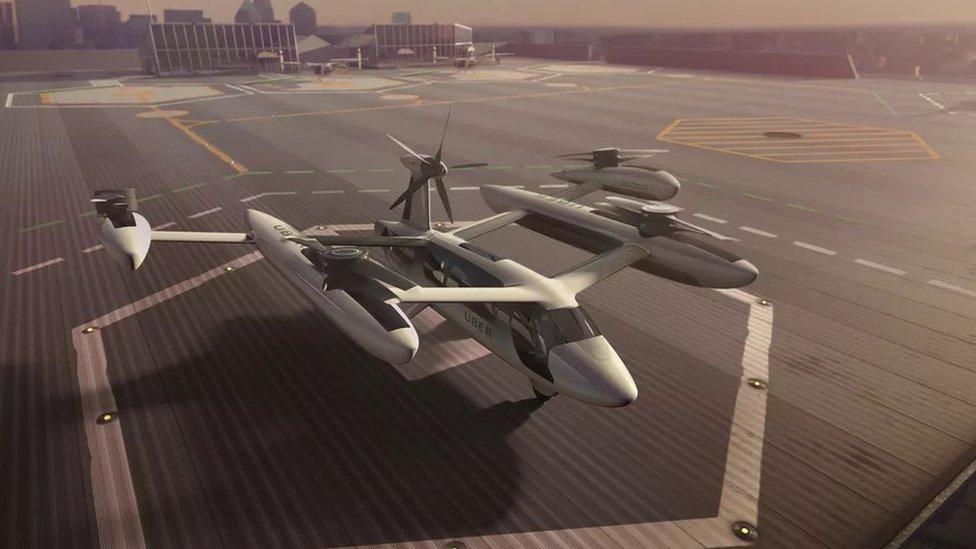Rolls-Royce develops propulsion system for flying taxi
- Published

The EVTOL could carry four to five passengers for 500 miles, Rolls-Royce says
Engine maker Rolls-Royce has designed a propulsion system for a flying taxi which it says could take to the skies as soon as early next decade.
The British firm said it had drawn up plans for an "electric vertical take-off and landing" (EVTOL) vehicle, which could carry four to five people.
The vehicle could travel at speeds of up to 250 mph (402 km/h) for approximately 500 miles, it said.
Rolls joins a variety of other firms in seeking to develop flying vehicles.
Speaking ahead of this week's Farnborough Airshow, Rob Watson, head of the company's electrical team, said: "We are well placed to play a leading role in the emerging world of personal air mobility and will also look to work in collaboration with a range of partners."
Flying vehicles have long been the stuff of science fiction, but aviation and technology companies are now working to make them a reality.
Airbus, US ride-sharing firm Uber and a range of start-ups including one backed by Google co-founder Larry Page, called Kitty Hawk, have all announced projects.
Rolls said the initial concept for EVTOL used gas turbine technology to generate electricity to power six electric propulsors, specially designed to have a low noise profile.
Its wings would be able to rotate 90 degrees, enabling the vehicle to take off or land vertically. It could also use existing heliports and airports.
"We believe that given the work we are doing today to develop hybrid electric propulsion capabilities, this model could be available by the early to mid 2020s, provided that a viable commercial model for its introduction can be created," the firm said.
The company, which will disclose more details at Farnborough, said it was looking for an airframe maker and a partner to provide aspects of the electrical system.
- Published12 July 2018
- Published24 May 2018

- Published13 March 2018
